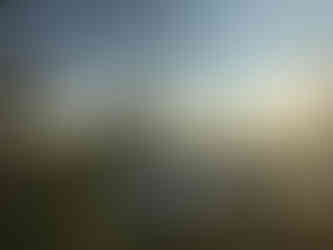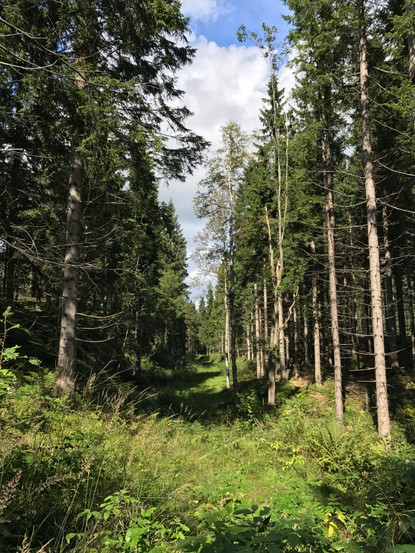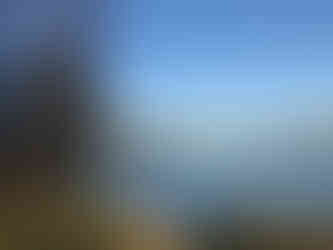- ktlarsen
- Apr 25, 2022
- 5 min read
OSLO, NORWAY
HIKING FOR BEGINNERS
M A Y 1 4 , 2 0 2 1

Oslo is a culturally progressive city, full of history, art museums, sculpture parks, and unique architecture – old and new. From the famous modern opera house, to the basement venues which saw the birth of Norwegian black metal, Oslo has a little something for everyone. But what I really love about Oslo is its integration of and access to nature. I have never been a big city person (says the former Brooklyn and current London resident), but I can’t help feel that an Oslo-sized city is an altogether different beast from the concrete metropolises like London, New York or Chicago. For me, even medium-sized cities can be overwhelming and disheartening with their lack of greenery and organic landscapes.
But when I moved into my flat in the young, hip Oslo neighborhood of Grünnerløkka, I miraculously felt as if I was surrounded by nature. At the west end of my block was the Akerselva River which runs through the whole city, with Birkelunden park on the east end. If I went around the corner and walked two blocks, there was another park. And if I just continued walking south for 20 minutes, or followed the river, I was looking over the Oslo Fjord, having passed more parks and green space along the way.
While there is plenty of true roughing-it-in-the-wilderness hiking available in Norway, I was surprised to learn that I could access some great, beginner’s hiking spots via the local metro (T-Bane). From the Jernbanetorget stop, located beneath the central train station (Oslo Sentralstasjon, more commonly referred to as Oslo S), you can take the number 1 train west (vest) to the last stop, Frognerseteren. The journey is around half an hour, but don’t worry, you will only be underground for the first few stops. In fact, the T-Bane journey is part of the experience, as you’ll spend the latter half of the trip zig-zagging up the side of the hills that surround the city. The views of Oslo and the fjord are breathtaking (especially in the right light), and I highly recommend sitting on the left side of the train for optimal views and Instagram worthy photos.
Once you arrive at Frognerseteren with the mountain bikers and cross-country skiers, most people will cross over the tracks and head down the hill towards paths and the restaurant, but consider starting at the path that is just off the metro platform on the left side of the train. From here, I won’t tell you which way to go, but there are plenty of different little paths, mostly identified with signs and some helpful color coding along the way. Nothing is too strenuous, but you can choose tracks that are a bit more adventurous, or, off the more beaten paths as it were. I have found some great gems and hidden spots up here, and I rarely see more than a handful of other people once I get away from the train platform. Here is a great place to really immerse yourself in Norwegian woods, but make sure to keep track of the way you came. No matter how many times I go hiking at Frognerseteren, I still usually manage to get a bit lost on my way back, even when I simply try to retrace my steps. And on that note, make sure you know what time the sun sets, which could be anywhere between 3pm or 11pm depending on the time of year. Firstly, I once got lost up here perilously close to sunset.With no cell reception and very little light, I had to do a bit of a panic scramble up a much steeper hill than I would have thought myself capable of climbing to get back to the right path. The other reason for knowing when the sun sets is because my favorite way to end a few hours wandering in the woods is to end up at the Frognerseteren Restaurant and Café. The building itself dates back to 1867 and is a truly Nordic experience in its own right: from its full on Viking-style carved dragon heads and antler chandeliers, to its larger fireplaces and Norwegian cuisine (try the reindeer if you eat meat). I like to grab a glass of wine and some food from the cafe, and sit in the upstairs windows overlooking the city while the sun sets on the fjord. It’s a bit lush for a day of hiking, but it’s an experience (and view) not to be missed. At this point you're just 5 minutes downhill from the T-Bane stop, though I suggest checking train times using the RuterReise app, as the trains only go about every 15 minutes and you don’t want to miss the last one!
If you want something a bit less immersive, or more leisurely, I recommend Sognsvann. Sognsvann is a large forest lined lake at the end of the T-Bane’s number 6 line, and is well known to the local Viking population, who frequent the spot year-round, so be prepared for company!. Being outdoorsy people in general, Norwegians don’t let little things like snow or sub-zero weather stop them (or they wouldn’t leave their homes most of the year!). There’s a popular saying in Norway, which translates to, ‘there is no bad weather, only bad clothing’ – and let’s be honest, they’ve got a point.
The walk around the lake is relatively flat, and the main reason I like to go there in the winter when snow makes Frognerseteren a bit less accessible (without snowshoes or skis that is). It is also the reason you’ll see a lot of parents with strollers, and I believe it’s meant to be wheelchair accessible (but don’t quote me on that). In the summer, it’s great for casual walks, running, swimming, sun bathing and picnics. In the winter, it is still very walkable, and you’ll see many a Norwegian, walking sticks in hand, circumferencing the lake on foot or cross country skis. And if you’re feeling brave, you can join the locals for a stroll across the frozen lake. I even once saw someone using a parasail to pull themselves around the icy lake on skis. There are some large rocks, as well as a few picnic tables and benches around the water, so you can take it as easy as you like. There is also a little kiosk between the train platform and the lake that I hear sells ice cream in the summer, and hot chocolate in the winter. Being a bit closer to central Oslo, with beautiful waterside views and forest paths, I love to go here when I need an easy dose of nature. It’s a no brainer.
And here’s the crazy part, both Frognerseteren and Sognsvann lake are still technically within the Oslo city limits!
And as I mentioned before, the RuterReise travel app will help you get around central Oslo and its surrounding areas. There’s even an accompanying app called RuterBillet for easy purchasing of bus, tram, ferry and T-bane tickets. However, I often have trouble trying to buy tickets on this app with my American credit card, and often found it easier to just buy travel cards (reisekort) from local shops like Narvesen or 7/11 (or look for any shop with a reisekort sign in the window).
So, dress for the weather, check sunset and T-bane times, try not to get too lost and ‘god tur!’ (happy hiking)!














































































Comments